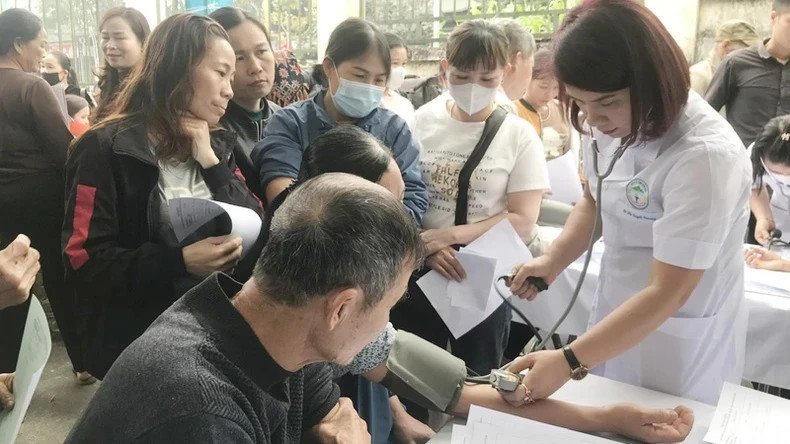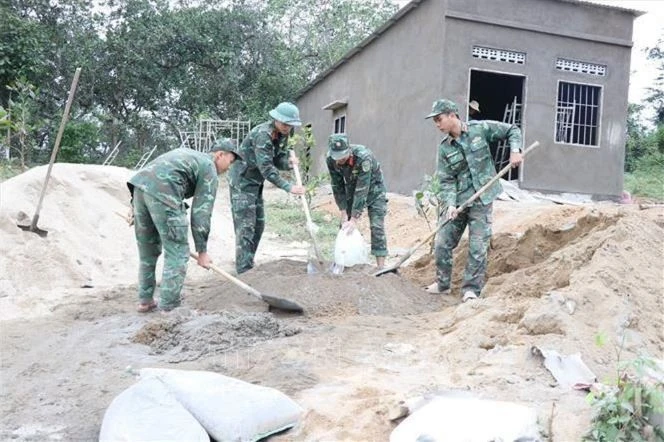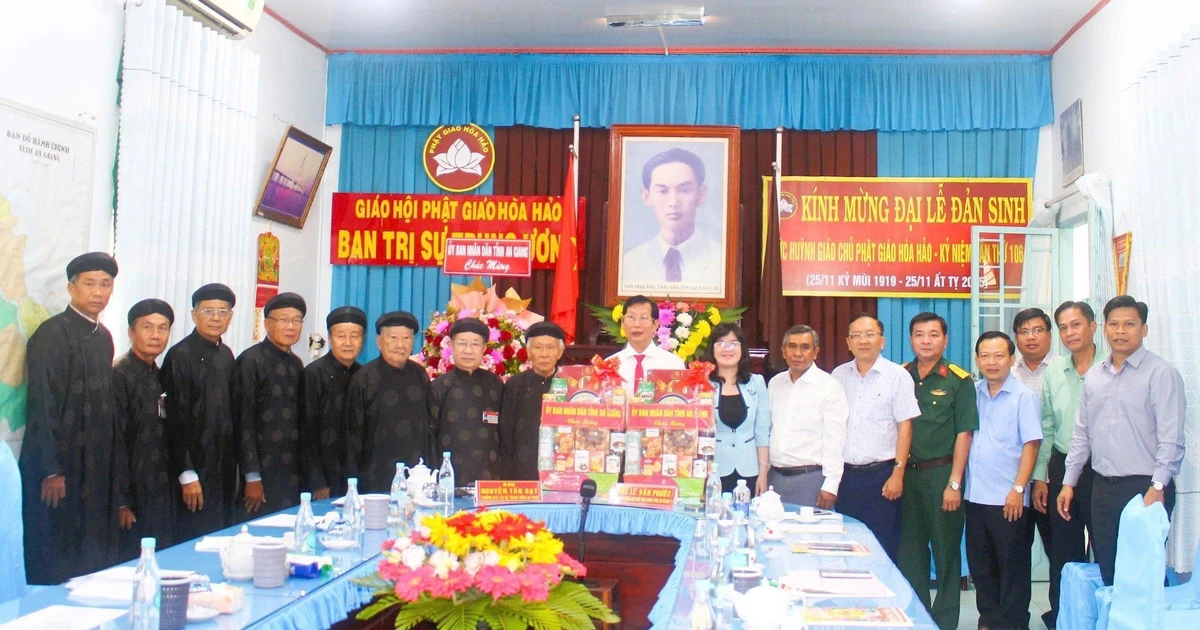In recent years, with the support of the Party and State, along with the efforts of healthcare sectors at all levels, significant progress has been made in maternal and child healthcare and reproductive health in Vietnam. However, despite these achievements, disparities persist in maternal mortality, child mortality and malnutrition rates among children, particularly between urban and rural areas, lowlands and highlands, and among different ethnic groups. These challenges continue to confront healthcare services in mountainous provinces.
Efficiency of pilot programmes
Sitting in the corridor of the Neonatal Department at Bac Ha General Hospital in Lao Cai Province, Ly Thi Sau from Ban Pho Commune, Bac Ha District, shared her experience while waiting to take her grandchild home after receiving treatment. She expressed her deep concern when she learned that her grandchild was suffering from respiratory distress and jaundice after birth. However, the thorough explanations provided by the doctors regarding the illness and treatment options brought reassurance to her family, trusting the doctors and the equipment here to treat her grandchild's illness without having to be transferred elsewhere
This not only ensures timely treatment for patients but also helps reduce healthcare costs for them, as the majority of the local population belongs to ethnic minorities and faces economic hardship.
“Bac Ha General Hospital’s Neonatal Department is fully equipped with facilities, such as incubators, phototherapy lights, oxygen respirators, CPAP machines, etc. Additionally, medical staff at the hospital participate in training sessions and workshops on paediatric emergency care and neonatal resuscitation, led by experts from national hospitals such as the National Children's Hospital and Hai Phong Obstetrics and Gynaecology Hospital. As a result, almost all newborns with illnesses or premature births receive timely treatment without the need for transfer to higher-level facilities,” said Dr Cu Seo Xay, a H’Mong ethnic doctor at Bac Ha General Hospital.
Director of Bac Ha General Hospital, Nguyen Nhu Tuan, stated: “The district has over 84% ethnic minority population, where certain customs and practices detrimental to health persist, such as early marriage, adolescent childbirth, and consanguineous marriage, which significantly impact the health of mothers and children. The postnatal care rate for mothers and newborns in the district has reached 77.98%; the rate of childbirth at medical facilities is only 79%; and the rate of newborn screening has reached only 50%. Therefore, the Ministry of Health, together with the provincial health sector of Lao Cai, has directed and supported the implementation of various activities to enhance maternal and child healthcare, as well as reproductive health services for the local population.”
Specifically, the Ministry of Health has instructed Hai Phong Obstetrics and Gynaecology Hospital to provide support and transfer knowledge through the “learning by doing” method in reproductive health, maternal and child care, prenatal care, and neonatal care. Additionally, the hospital has been equipped with modern facilities such as 4D ultrasound machines, fatal heart rate monitors using ultrasound, colposcopy systems, infant sterile baths, patient monitoring systems, neonatal incubators, phototherapy lights, electric syringe pumps, fluid infusion pumps, and CPAP machines, etc.
Thanks to the comprehensive investment, the hospital has mastered techniques in obstetrics and paediatrics, including fatal extraction surgery, hysterectomy, fibroids, and neonatal incubator care. In 2023 alone, the hospital examined and treated 2,191 patients, including 223 surgeries, 532 deliveries, and gynaecological treatments for 767 patients. Furthermore, Hai Phong Obstetrics and Gynaecology Hospital has collaborated with relevant units to organise free medical examination, treatment, and medication distribution programs for the residents of Bac Ha District.
Associate Professor Dr Vu Van Tam, Director of Hai Phong Obstetrics and Gynaecology Hospital, emphasised: “With the responsibility assigned as the guiding authority for obstetric and gynaecological healthcare in Lao Cai Province, Hai Phong Obstetrics and Gynaecology Hospital is ready to transfer the best techniques, suitable for the local human resources and medical equipment, to address the health issues of ethnic minorities. Apart from direct training, the hospital is also ready to assist in personnel training, hospital management technology, and professional support through telehealth.”
Closing the gap between mountainous and lowland regions
According to the Ministry of Health, the maternal mortality rate has decreased by more than five times, from 233 deaths per 100,000 live births in 1990 to 44 deaths per 100,000 live births in 2023. The under-five mortality rate has dropped nearly four times, from 58% to 18.2%; the infant mortality rate has decreased from 44% to 11.6%; the prevalence of child malnutrition has also significantly reduced from 53% to 11%.
Furthermore, specialised maternal and child healthcare systems have been strongly developed from central to grassroots levels, with many advanced scientific and technological achievements worldwide being researched and applied to improve the quality of maternal, child, and reproductive healthcare. Thanks to these achievements, Vietnam has been recognised internationally as a highlight of achieving the Millennium Development Goals (now Sustainable Development Goals) related to maternal and child health.
However, despite these achievements, maternal and child healthcare in Vietnam still faces many challenges and disparities between urban and rural areas, lowland and mountainous regions, and different ethnic groups. The maternal mortality rate among ethnic minorities is seven times higher than that of the Kinh majority; infant mortality, child malnutrition, and particularly stunted growth in mountainous ethnic minority areas are still two to three times higher than the national average.
“To continue narrowing the gap between regions, bringing mountainous areas up to par with lowland regions, the National Assembly and Government have approved and implemented the 'Socio-economic Development Program for Ethnic Minority and Mountainous Areas for the 2021-2025 period,' which includes many important objectives related to maternal and child health, and nutrition,” said Deputy Minister of Health Tran Van Thuan.
To support the successful implementation of these objectives in mountainous provinces, on December 6, 2023, the Minister of Health issued Decision No. 4440/QD-BYT, assigning the scope of guidance in obstetric and gynaecological healthcare. These supportive and directive activities have helped improve the healthcare capacity, bring high-quality medical services closer to the people, and contribute to reducing maternal and neonatal mortality and morbidity rates among ethnic minority populations.
To further enhance the quality of maternal and child healthcare and reproductive health and gradually narrow the gap between mountainous and lowland regions, the Ministry of Health will continue mobilising resources to support mountainous, remote, border, and island areas in upgrading infrastructure, supplementing equipment, and training personnel to strengthen and improve the quality of maternal and child healthcare services. Implementing comprehensive essential obstetric emergency care packages at the district level; deploying electronic maternal and child health monitoring systems. Moreover, the Ministry of Health will relaunch satellite hospital projects and Project 1816 involving not only central-level hospitals but also provincial hospitals with strengths in obstetrics and paediatrics, such as Hai Phong, Hue, and Ho Chi Minh City, to jointly address healthcare gaps, especially in remote, difficult economic areas.
Furthermore, local authorities must continue maintaining inspection, supervision, and support for healthcare facilities, including private healthcare providers. Inspection activities should focus on ensuring compliance with professional regulations to enhance the quality of obstetric emergency care, neonatal care, prenatal management, maternal and child nutrition, reproductive support, and safety measures.
















